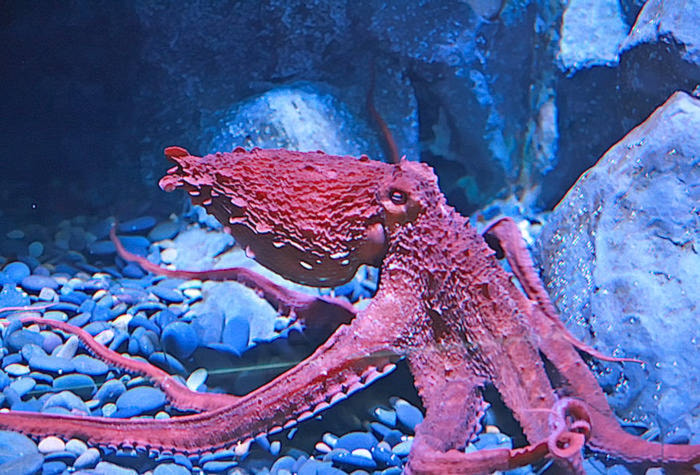Mythology and superstition have portrayed octopuses as alien beings or evil creatures dwelling in the terrifying dark depths of oceans.
Little wonder, considering they are a bit unusual.
The giant Pacific octopus has three hearts, nine brains and blue blood, making reality stranger than fiction.
Things to know about the giant Pacific octopus, which is naturally found in the waters of the U.S. West coast, the Aleutian Islands and Japan:
—�Ĕ�Ĕ
NINE BRAINS
A central brain controls the nervous system. In addition, there is a small brain in each of their eight arms — a cluster of nerve cells that biologists say controls movement. This allows the arms to work independently of each other, yet together toward the same goal.
—�Ĕ�Ĕ
THREE HEARTS
That makes sense, considering their bodies are all muscle except for two small plates anchoring their heads, together with a beak used to grasp and bite prey. Two hearts pump blood to the gills. A larger heart that circulates blood to the rest of the body.
—�Ĕ�Ĕ
BLUE BLOOD
The blood of the giant Pacific octopus has a copper-rich protein called hemocyanin that improves its ability to transport oxygen in cold ocean environments.
—�Ĕ�Ĕ
CAMOUFLAGE
They’re able to change their colour and texture to camouflage themselves in the blink of an eye, thanks to a complex system of specialized pigment sacs called chromatophores, nerves and muscles.
—�Ĕ�Ĕ
TOXIC INK
Octopuses have glands that produce a toxic ink which is then stored in large sacs. When the animal is alarmed, it squirts the ink in a powerful jet in one direction that simultaneously propels the animal in the opposite direction, effectively clouding the water to confuse a potential threat while fleeing to safety.
—�Ĕ�Ĕ
LOTS OF SUCKERS
Adult female giant Pacific octopuses have about 280 suckers in each of their eight arms. Males have fewer suction cups because the tip of their third right arm functions as a reproductive organ.
—�Ĕ�Ĕ
THE ULTIMATE SACRIFICE
Giant Pacific octopus mothers sacrifice their lives after laying their eggs in deep-water dens. They live with their eggs for up to seven months without eating, ensuring that streams of oxygen- and nutrient-rich water waft over them. Mothers usually die after their broods hatch.
—�Ĕ�Ĕ
SOURCES: New England Aquarium, Oceana, The Natural History Museum, Monterey Bay Aquarium
—�Ĕ�Ĕ
(Canadian Press)
Like us on and follow us on .



